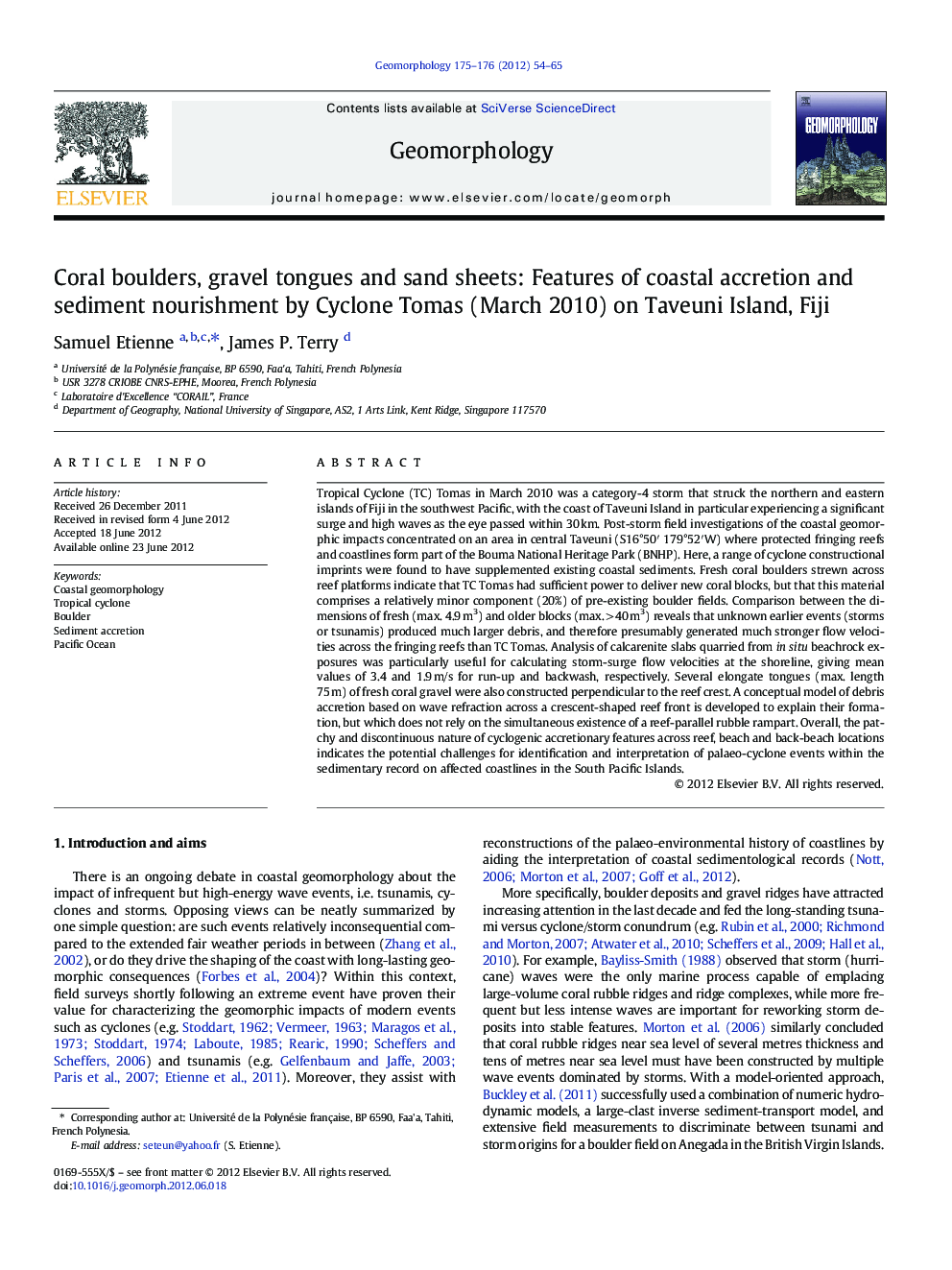| کد مقاله | کد نشریه | سال انتشار | مقاله انگلیسی | نسخه تمام متن |
|---|---|---|---|---|
| 4685157 | 1635471 | 2012 | 12 صفحه PDF | دانلود رایگان |

Tropical Cyclone (TC) Tomas in March 2010 was a category-4 storm that struck the northern and eastern islands of Fiji in the southwest Pacific, with the coast of Taveuni Island in particular experiencing a significant surge and high waves as the eye passed within 30 km. Post-storm field investigations of the coastal geomorphic impacts concentrated on an area in central Taveuni (S16°50′ 179°52′W) where protected fringing reefs and coastlines form part of the Bouma National Heritage Park (BNHP). Here, a range of cyclone constructional imprints were found to have supplemented existing coastal sediments. Fresh coral boulders strewn across reef platforms indicate that TC Tomas had sufficient power to deliver new coral blocks, but that this material comprises a relatively minor component (20%) of pre-existing boulder fields. Comparison between the dimensions of fresh (max. 4.9 m3) and older blocks (max. > 40 m3) reveals that unknown earlier events (storms or tsunamis) produced much larger debris, and therefore presumably generated much stronger flow velocities across the fringing reefs than TC Tomas. Analysis of calcarenite slabs quarried from in situ beachrock exposures was particularly useful for calculating storm-surge flow velocities at the shoreline, giving mean values of 3.4 and 1.9 m/s for run-up and backwash, respectively. Several elongate tongues (max. length 75 m) of fresh coral gravel were also constructed perpendicular to the reef crest. A conceptual model of debris accretion based on wave refraction across a crescent-shaped reef front is developed to explain their formation, but which does not rely on the simultaneous existence of a reef-parallel rubble rampart. Overall, the patchy and discontinuous nature of cyclogenic accretionary features across reef, beach and back-beach locations indicates the potential challenges for identification and interpretation of palaeo-cyclone events within the sedimentary record on affected coastlines in the South Pacific Islands.
Journal: Geomorphology - Volumes 175–176, 15 November 2012, Pages 54–65